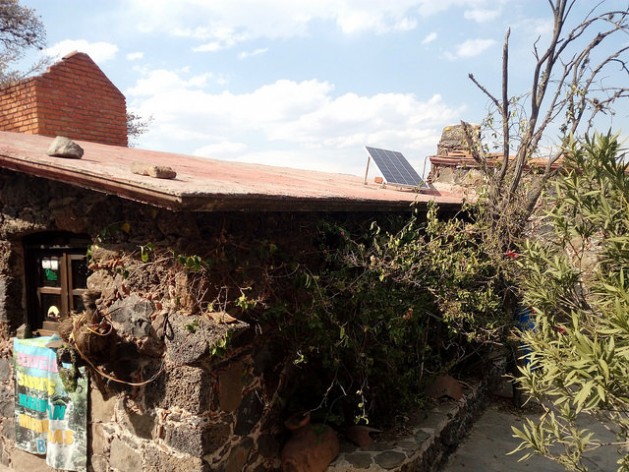Millions of Homes in Mexico Suffer from “Energy Poverty”
May 29, 2017

A house with a solar panel in the municipality of Tula, in Hidalgo, a state adjacent to Mexico City. Non-conventional renewable sources are considered an instrument to combat energy poverty. Credit: Emilio Godoy/IPS
MEXICO CITY, May 29 2017 (IPS) – Energy poverty afflicts millions of homes in Mexico, with many social, economic and environmental impacts for the country.
These homes, located in both urban and rural areas in this Latin American country of 122 million people, have difficulty satisfying their needs for energy for cooking, lighting, heating and entertainment.
“Not only is it a problem of access, since the population needs other consumables, to cook, take a bath, for family entertainment. Access to energy is a key indicator of well-being and in this respect it is important to know how many families lack this service,” expert Boris Graizbord told IPS.
The academic from the Centre of Demographic, Urban and Environmental Studies at the public College of Mexico pointed out that some groups in small localities, even those who have their own incomes or remittances sent home by relatives in the United States, are unable to access natural gas or other energy sources.
The concept of energy poverty is new in Latin America, although it emerged in the 1990s in Britain, to describe the situation when a poor family spends more than10 percent of their income on energy.
But in countries such as Mexico the concept has been adapted to take into account cultural and social differences. Here the concept includes lack of access to energy, poor quality services, or energy inefficiency.
In a pioneering study, Graizbord and his colleague Roberto García, from the public College of the Northern Frontier, found that nearly 37 per cent of households –about 11 million homes– suffer from a shortage of energy in terms of “economic goods” such as thermal comfort, an efficient refrigerator or a gas or electric stove.
The study “Spatial characterisation of energy poverty in Mexico. An analysis at a subnational level,” published in 2016 in the magazine Economy, Society and Territory, found that the main factors behind the phenomenon are income level, the size of the town and of the house, and the educational level and gender of the head of the household.


